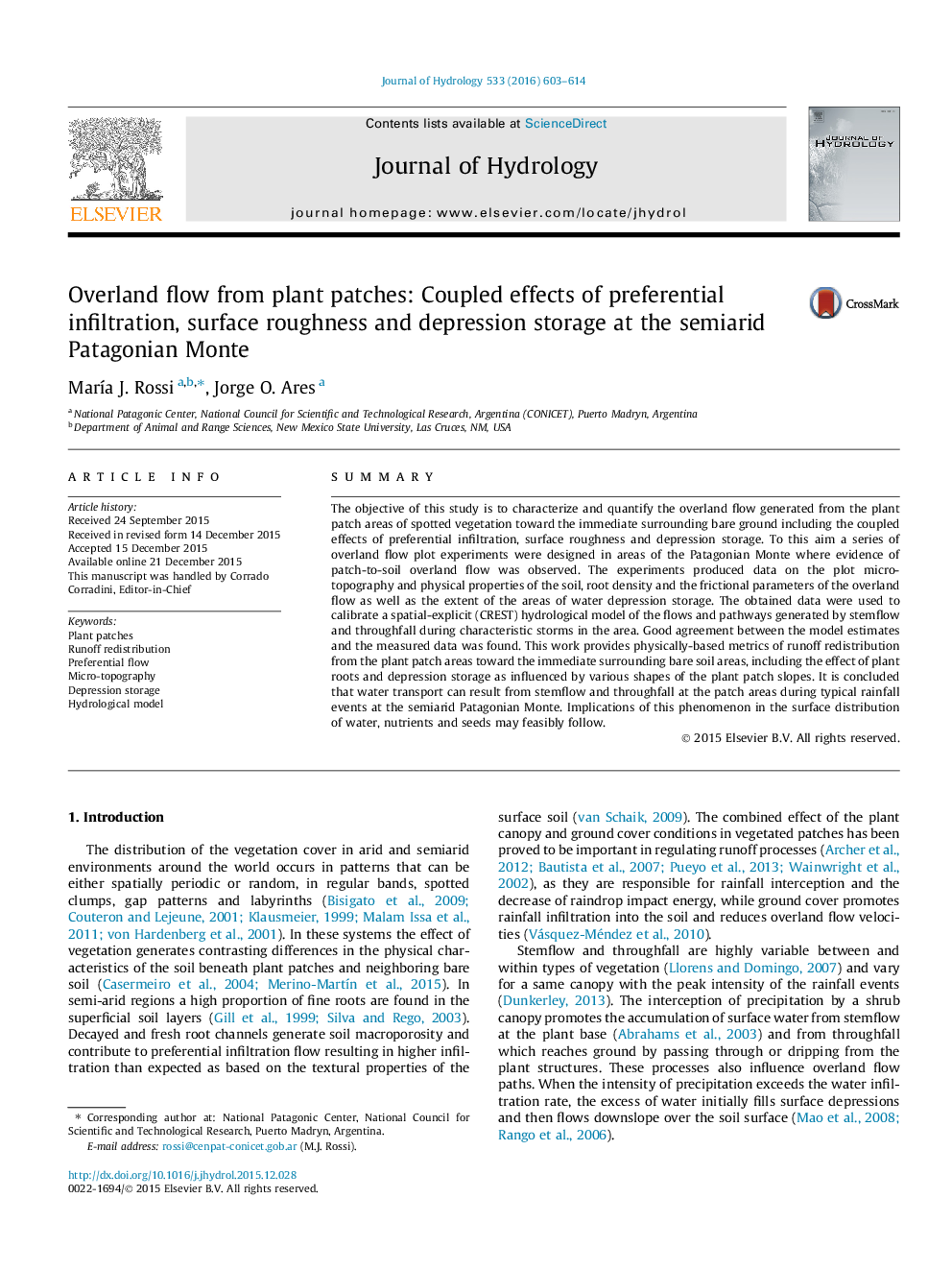| Article ID | Journal | Published Year | Pages | File Type |
|---|---|---|---|---|
| 6410563 | Journal of Hydrology | 2016 | 12 Pages |
â¢We characterize the overland flow generated at patches of spotted vegetation.â¢Overland flow metrics vary within different areas of the plant patch.â¢Hydrological simulation is consistent with evidence of patch-to-soil water transport.
SummaryThe objective of this study is to characterize and quantify the overland flow generated from the plant patch areas of spotted vegetation toward the immediate surrounding bare ground including the coupled effects of preferential infiltration, surface roughness and depression storage. To this aim a series of overland flow plot experiments were designed in areas of the Patagonian Monte where evidence of patch-to-soil overland flow was observed. The experiments produced data on the plot micro-topography and physical properties of the soil, root density and the frictional parameters of the overland flow as well as the extent of the areas of water depression storage. The obtained data were used to calibrate a spatial-explicit (CREST) hydrological model of the flows and pathways generated by stemflow and throughfall during characteristic storms in the area. Good agreement between the model estimates and the measured data was found. This work provides physically-based metrics of runoff redistribution from the plant patch areas toward the immediate surrounding bare soil areas, including the effect of plant roots and depression storage as influenced by various shapes of the plant patch slopes. It is concluded that water transport can result from stemflow and throughfall at the patch areas during typical rainfall events at the semiarid Patagonian Monte. Implications of this phenomenon in the surface distribution of water, nutrients and seeds may feasibly follow.
